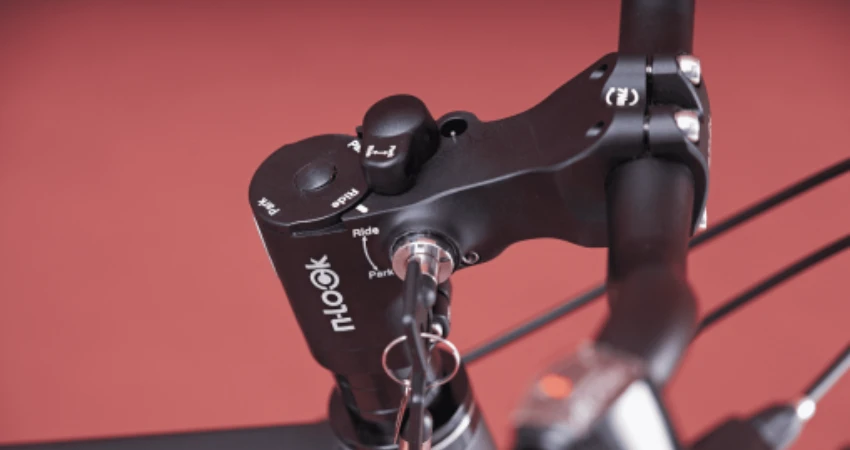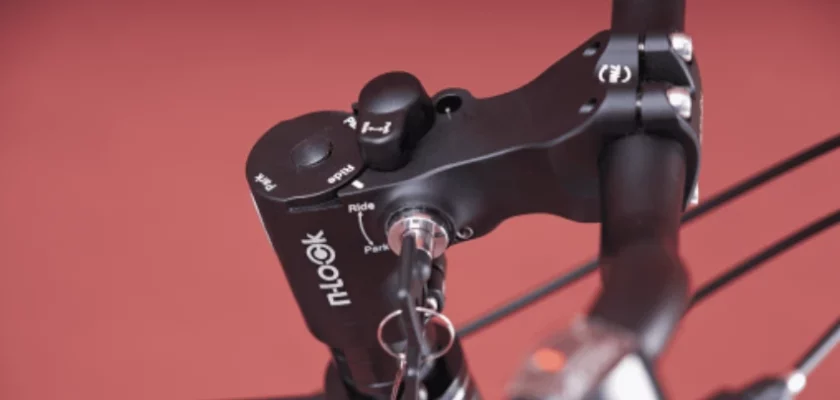Are you tired of riding your bike with uncomfortable handlebars? Do you wish you could adjust them to find the perfect angle? Look no further! In this blog article, we will delve into the secret of how to rotate bike handlebars to achieve maximum comfort and control.
Whether you are a seasoned cyclist or a casual rider, having the ability to rotate your bike handlebars can make a world of difference in your riding experience.
It allows you to find the most ergonomic position, reduce strain on your wrists and arms, and optimize your overall control of the bike. With just a few simple steps, you’ll be on your way to a more enjoyable and customized ride.
So, get ready to unlock the potential of your bike! In the following sections, we will guide you through the essential steps and tips on how to rotate bike handlebars effectively and effortlessly. Say goodbye to uncomfortable rides as we explore this easy solution for a more tailored biking experience.
Mastering Bike Handlebar Rotation: Simple Guide

Rotating the handlebars of your bike may seem like a simple task, but it can greatly impact your comfort and control while riding. Whether you need to adjust the handlebars for a better riding position or to accommodate specific needs, this guide will walk you through the process step by step. Let’s dive right in!
Gather the Necessary Tools
Before getting started, make sure you have the following tools on hand:
- Allen wrench set
- Adjustable wrench
- Tape measure or ruler
- Grease or lubricant
Assess Your Bike’s Handlebar Style
Different bikes come with different handlebar styles, such as flat bars, drop bars, or riser bars. Understanding your bike’s handlebar type is crucial to ensure you perform the rotation correctly. Here’s a brief overview of common handlebar styles:
- Flat bars: These handlebars are straight across and commonly found on mountain bikes and hybrids.
- Drop bars: Drop bars curve downward and are usually seen on road bikes and some touring bikes.
- Riser bars: Riser bars have a slight rise in the center and are popular on mountain bikes and some hybrids.
Loosen the Stem Bolts
To rotate the handlebars, you’ll need to loosen the stem bolts that hold the handlebars in place. Follow these steps:
- Locate the stem bolts at the front of the bike’s head tube.
- Using an Allen wrench, loosen the bolts by turning them counterclockwise. Be careful not to remove them completely.
- If the bolts are too tight, use an adjustable wrench to increase leverage while turning the Allen wrench.
Mark the Current Position
Before making any adjustments, it’s helpful to mark the current position of your handlebars. This way, you can easily revert to your original setup if needed. Here’s how to mark the position:
- Hold the front wheel between your legs to keep the bike steady.
- Using a tape measure or ruler, measure the distance from the end of your handlebars to a fixed point on your bike, such as the stem or frame.
- Make a small mark with a piece of tape or a marker to indicate the original position.
Rotate the Handlebars
With the stem bolts loosened and the original position marked, you can now rotate the handlebars. Follow these steps based on your handlebar style:
For Flat Bars
- Gently rotate the handlebars in the desired position.
- Make sure the brake levers and shifters, if applicable, are at a comfortable angle.
- Tighten the stem bolts gradually and evenly using the Allen wrench, starting with the lower bolt and then the upper bolt.
- Ensure the handlebars are straight by aligning them with the front wheel.
- Check that the handlebars are secure by gripping them firmly and applying light pressure.
For Drop Bars and Riser Bars
- Loosen the bolts on the side of the stem that hold the drop bars or riser bars in place.
- Rotate the bars to the desired position.
- Align the bars so that they are symmetrical, ensuring they are at the same angle on both sides.
- Tighten the bolts on the side of the stem gradually and evenly using the Allen wrench.
- Check the handlebars’ position by standing in front of the bike and checking that they are parallel to the front wheel.
- Test the handlebars by gripping them firmly and applying light pressure to ensure they are secure.
Test and Fine-Tune
Once you’ve tightened the stem bolts and aligned the handlebars, it’s important to test and fine-tune your adjustments. Take your bike for a short test ride to ensure the new handlebar position feels comfortable and provides adequate control. If you notice any discomfort or the handling feels off, consider making slight adjustments until you find the perfect fit.
Regular Maintenance and Considerations
Rotating your bike handlebars is not something you’ll need to do frequently. However, it’s essential to perform regular maintenance and consider a few additional factors:
- Handlebar tape or grips: If you have drop bars or flat bars with tape or grips, you may need to remove and reapply them after rotating the handlebars.
- Tightening torque: When tightening stem bolts, be mindful not to overtighten them, as it may damage the bolts or compromise the integrity of the handlebars.
- Professional assistance: If you feel unsure or uncomfortable performing the rotation yourself, don’t hesitate to seek assistance from a professional bike mechanic.
Remember, proper handlebar rotation can significantly enhance your biking experience, ensuring a comfortable riding position and optimal control. So, don’t hesitate to follow this guide and make the necessary adjustments to suit your preferences and needs. Happy cycling!
Frequently Asked Questions
1. How can I loosen the stem bolt to rotate my bike handlebars?
To loosen the stem bolt, use an Allen wrench or hex key to turn it counterclockwise until it feels loose. Ensure you don’t fully remove the bolt, as it keeps the handlebars securely attached to the fork.
2. Do I need any special tools to rotate bike handlebars?
No, you don’t need any special tools. A basic set of Allen wrenches or hex keys will suffice for most handlebar adjustments.
3. How do I align my bike handlebars straight after rotating them?
To align your bike handlebars straight, sit on the bike and position the front wheel facing forward. Loosen the stem bolt slightly, then adjust the handlebars until they appear parallel to the front wheel. Finally, tighten the stem bolt securely.
4. Can I rotate my bike handlebars without adjusting the brakes?
Yes, you can rotate the handlebars without affecting the brake setup. Just make sure the cables are properly routed and not overly twisted after the adjustment.
5. Is it necessary to grease the stem bolt when rotating bike handlebars?
It is not necessary to grease the stem bolt when rotating bike handlebars. However, if you encounter any issues while loosening or tightening the bolt, applying a small amount of bike-specific grease may help.
Final Thoughts
In conclusion, rotating bike handlebars is a simple task that can greatly improve your riding experience. To do this, start by loosening the stem bolts and aligning the handlebars with the front wheel.
Once in the desired position, tighten the bolts securely. Remember to test the alignment and adjust if necessary. Rotating bike handlebars allows for a more comfortable riding position and enhances control while cycling.
By following these steps, you’ll be able to effectively and easily rotate your bike handlebars to find the perfect fit for your riding style.

